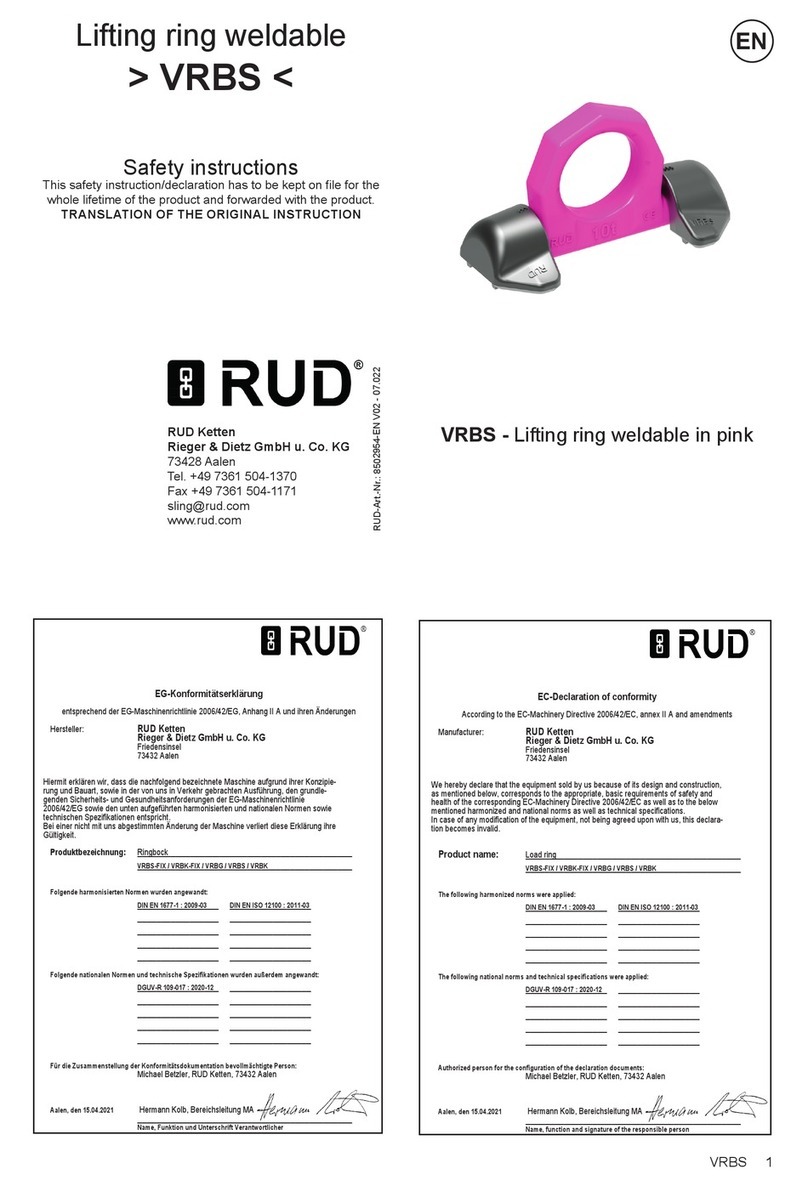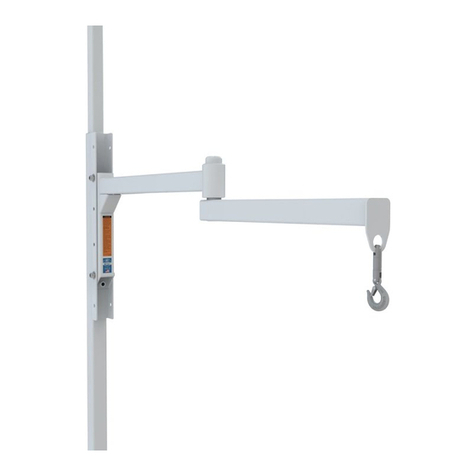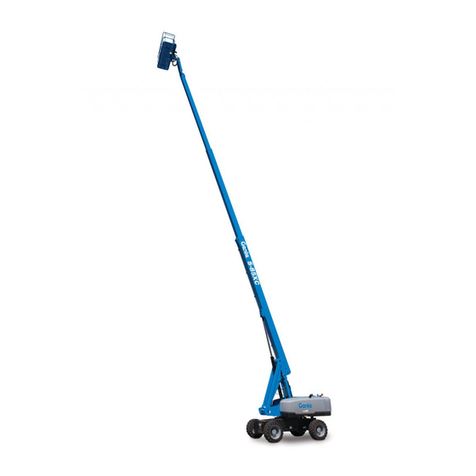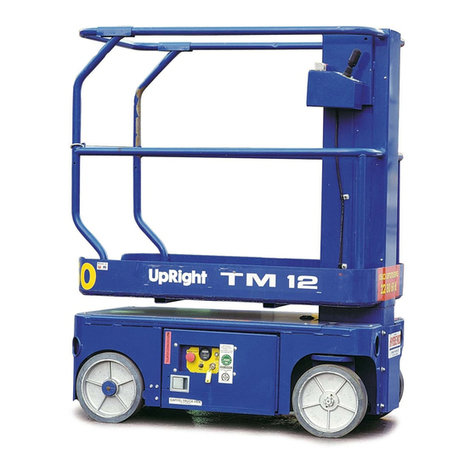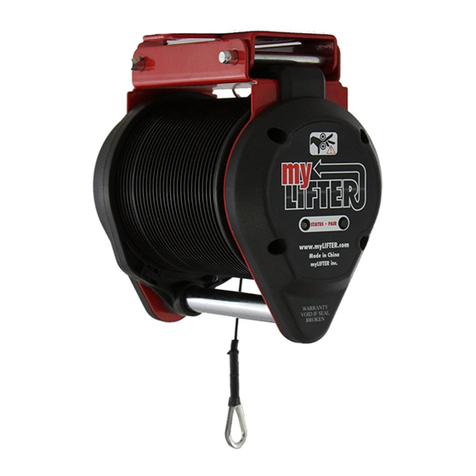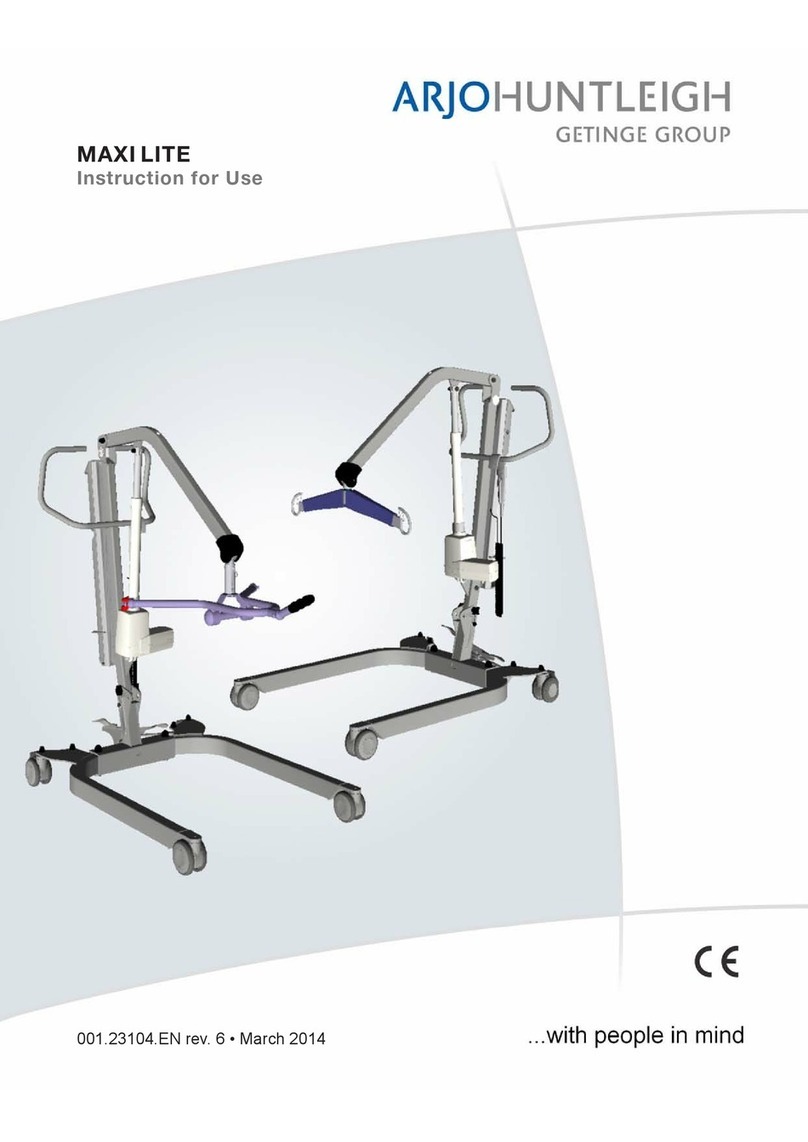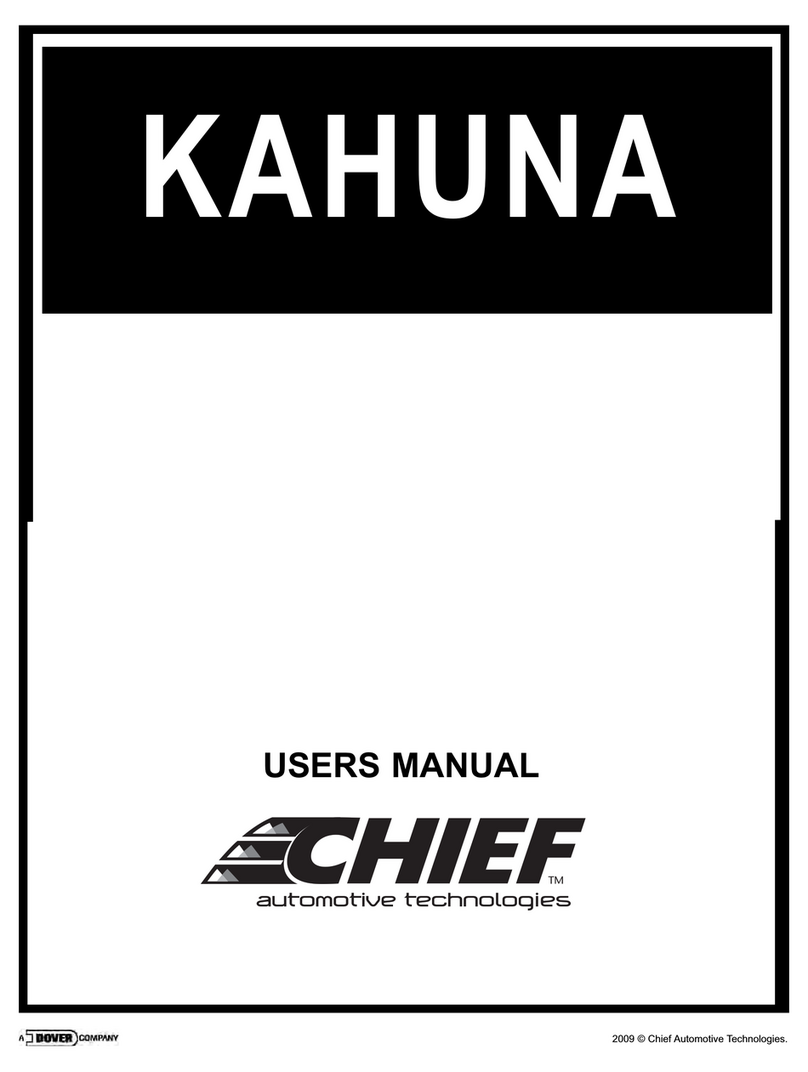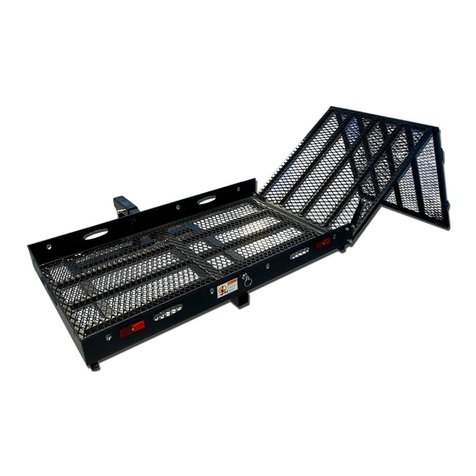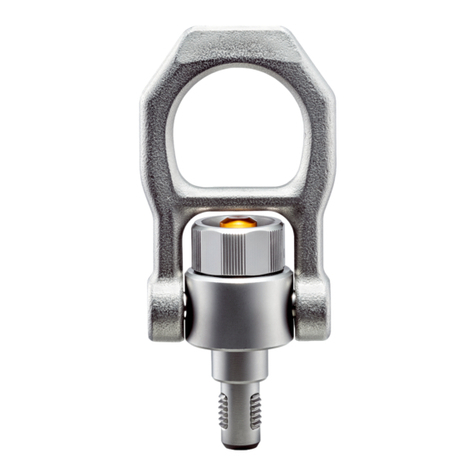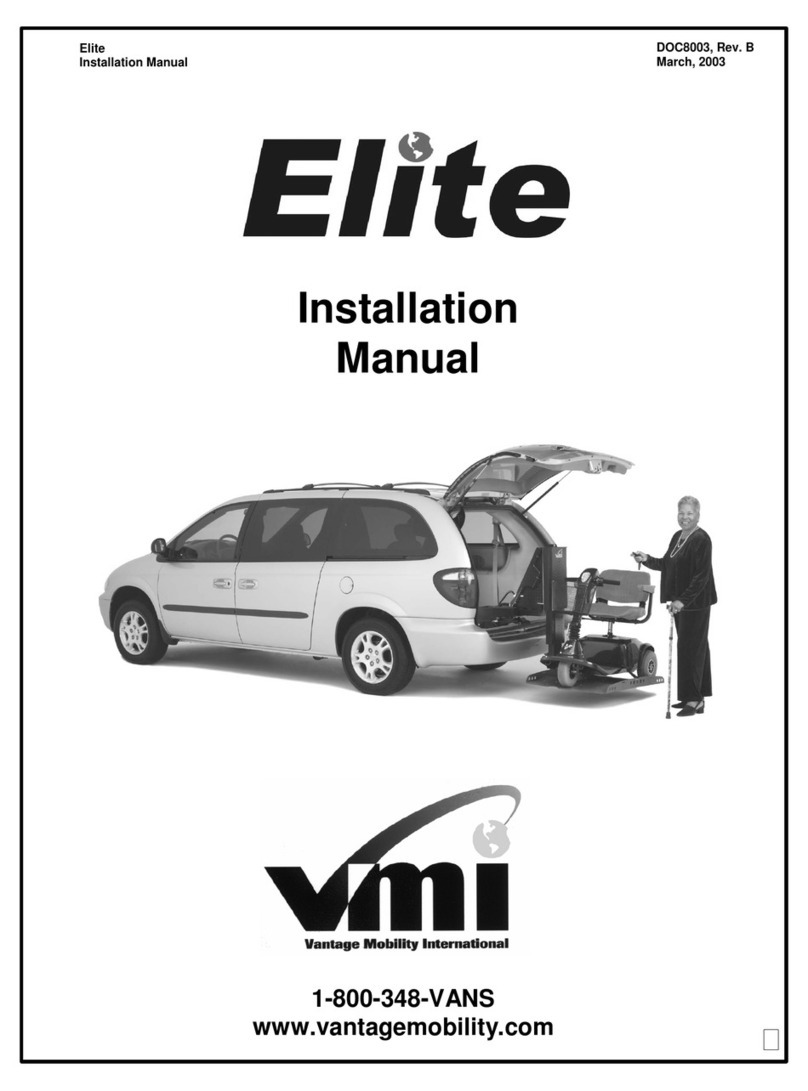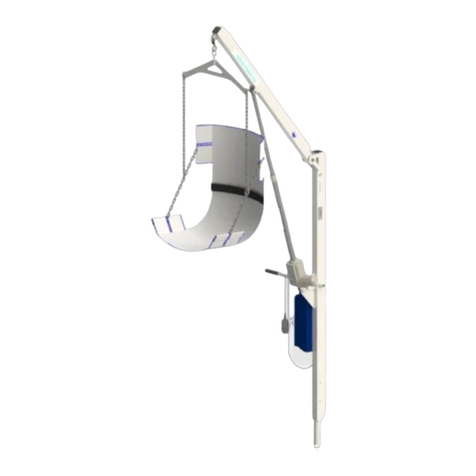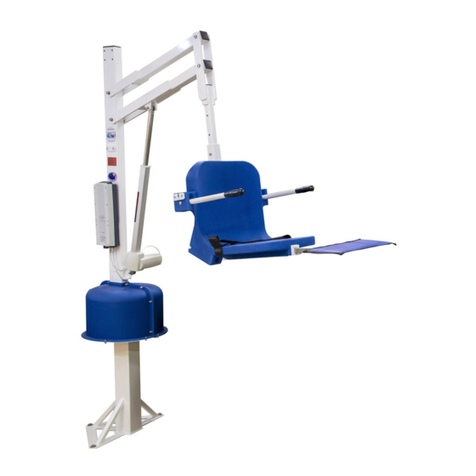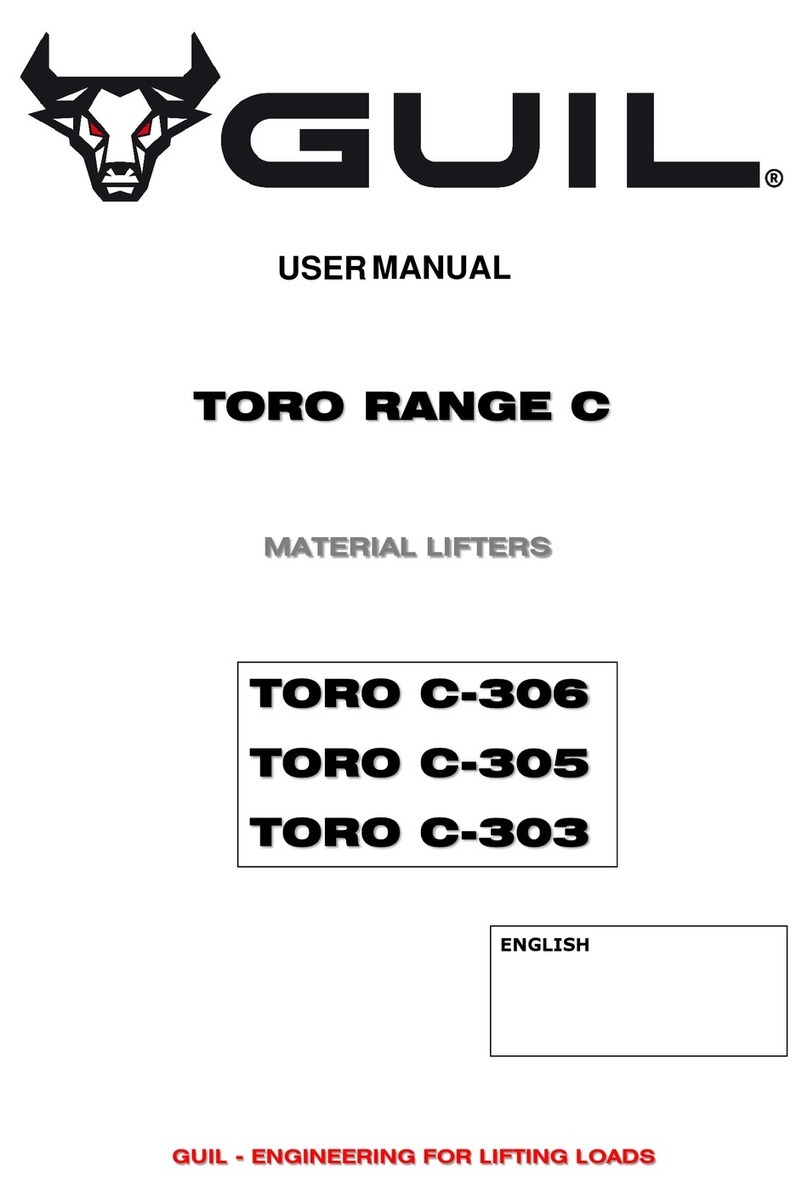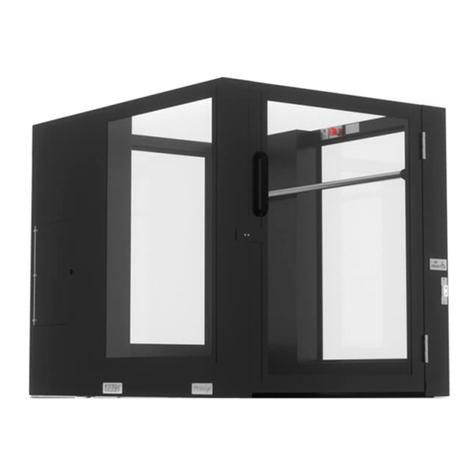GL-Tech BOAT LIFT User manual

2015-05-08 Page 1(of 11)
BOAT LIFT TO BOAT TRAILER
MANUAL
§

2015-05-08 Page 2(of 11)
General:
Boat lift is a means to lift a boat (motor boat or the like) when loading to or from a boat trailer on land. The
lift may not be used for other purposes.
To avoid accidents, it is imperative that you read and follow the safety instructions and all other instructions
below.
Safety Instructions:
ATTENTION!
Risk of serious injury exists if the instructions below are not followed !!
Only someone with full knowledge of the lift must work with this
Make sure no unauthorized persons and especially children staying nearby for work in progress
Staying not close and especially not during a boat elevating / suspended load
Perform all lifting motion slowly, cautiously and with good control
Always pull the vehicle's parking brake when the car is parked with the trailer attached
Hand brake on the trailer also drawn to and / or place stop blocks in front and behind the trailer
wheels to prevent rolling during the lifting operation
Check that the lift all parts and the lift belt with its seams are in good condition before use
Store the boat lift but above all the lifting belt protected from sunlight and moisture
Make sure that the lifting belt hanging down in the line between the lift poles when the lift begins.
Check again when the boat starts to move upwards
When lifting the boat's front part shall the lift belt be placed where the keel part is not tilted up to
prevent the sling from sliding forward. Also the rounding sides of boat's bow may be avoided. Use
"draw ropes" from the boat's stern corners to lift the belt on each side of the boat if the boat's
shape allows the lifting strap at risk of sliding sideways
The movement of the trailer must be done manually after being disconnected from the vehicle's
tow hook, when the boat is in the raised position. The trailer wheels must not touch the lift when it
is rolled forward or backward
When lifting the boat must always the boats other end (bow or stern) be firmly anchored. E.g. the
stern resting on a steady trestle when the bow is lifted or that the bow is attached to the trailer
when the stern is lifted. The cars / trailers hand brake is always engaged and / or trailer wheels
fixed with blocks
The lift may not lean either sideways, forward or backward. Checked this before lifting takes
place, but also occasionally during lifting. Check with a spirit level against respectively pole.
The boat lift must never be used for lifting over 1500 kg
The ground must be flat and even where the lift is located

2015-05-08 Page 3(of 11)
Technical data:
Length (L):
2750 mm (1660 mm divided for transport)
Width inside (W):
Stepless adjustable up to 2630 mm
Hight (H)
2500 mm (+ lift 0 - 400 mm)
Max load boat lift
1500 kg
Lift belt:
Approved for U-lift of 2 tons (7 x safety before failure) in accordance with EN 1492
Weight lift:
Frame approx. 20 kg + others approx. 16 kg
Data for boat:
The maximum boat width limited by dimension " W" ( adjustable) but consideration must be given
to the turn handles of a length of 120 mm each and have a distance of about 950 mm from the base .
Usually turns the hull inwards where the knobs are located, while some types of boats has fairly
straight sides and are wide also at the stern. Observe also the dimension " H " so that the lift's upper
profile is above such foredeck and any pulpit. The distance to the foredeck, however, is constant
during the lift movement. If the lift first being divided with the knobs on the center can also be fitted
between the bow and its pulpit / rails.
The boat's total weight about 2 tons (depend on the boat's weight distribution, engine placement etc.
Pic. 1

2015-05-08 Page 4(of 11)
All parts:
Pic. 2
Assembling of the lift:
First mount the frame up and down happily on a bench by first loosening the knobs slightly and then fold out
the legs. Red wheel represents the pivot point and unloaded only slightly. NOTE ! Do not loosen the knobs
too much to loosen from its slot nut. The legs can be moved sideways and the distance between the inside of
the legs should be the boat's width (where it will be lifted) + about 15 cm per side. Set the measure, verify
that the legs are fully extended at right angles and then tighten all knobs hard by hand.
Unfold the foot-tubes with the trapezoid rod by first loosening the bolt with pin at the bottom. Then reinstall
the bolt with its lock - pin.
Pic. 3

2015-05-08 Page 5(of 11)
Pic. 4:
Turn the frame or lay down this and mount
the lifting belts one end of the leg where the
rapid tensioner (with blue knobs) sits (Pic. 4).
Fit also the other end of the belt to the other
frame corner with its bolt but first make sure
the belt is not twisted.
The bolts (M12) is pushed in completely that
the thread not to come in contact with the belt
and also nuts turned completely fixed fingers
(no tools).
Use of Pre-tensioner (before lifting):
The two blue knobs loosened slightly when
later will pre-tension the lifting strap before
lifting the boat.
Draw then the bracket down and help with
pulling the strap so that it is as taut as
possible.
Then tighten the blue knobs hard by hand.
Lifting of boat. (from land to trailer):
Pic. 5
The boat is on boat stands or trestles.
Park the trailer in front of the boat and
disconnect it from the car's tow hook.
Placing foot tubes with its threaded rods
roughly where the lift must be placed beside
the boat's front part.
Bring the frame and hold it above the foot
tubes on both sides.
Make sure that the groove (Pic.. 5) on the top
of threaded rod pointing in the boat along the
direction.
Press down the frame with its lower tube
firmly down over the thread. Bolt up the tube
will then fit into the grooves of the threaded
rod so that it cannot wist when lifting.

2015-05-08 Page 6(of 11)
Pic. 6
Pic. 7
Pic. 8
If the lift is to be placed behind the boat
forward trestle must the strap end be
loosened, put under the boat behind the trestle
and up to the corner of the frame again.
Check that the belt is not twisted and
assemble the bolt.
A stool to stand on makes the above
operation easier.
Place the lift near the front trestle. NOTE !
Not too far ahead where the keel is inclined
upwards and / or hull swings inwards when
there is a risk that the lifting belt sliding
forward. Use ropes from the boat's stern
corners to the lift the belt on each side of the
boat if the lift must be positioned so that the
lifting belt are at risk of sliding sideways.
Check that the distance between the lift poles
and boat both sides are equal.
Clear the ground under the feet / boards of
stones etc. and ensure that the boards resting
plane on its entire surface.

2015-05-08 Page 7(of 11)
Pic. 9
Pic. 10
Pic. 11
Check with a spirit level (Pic. 9) that each
foot-tube or the frame above does not lean in
either the boat's longitudinal or transverse
direction.
If the lift is tilted in the boat's cross-direction
can be compensated by raising one hand a
few centimeters by turning its handle a
number of rev. before the lifting begins.
Another board can also be placed under foot.
If the lift is tilted in the boats along direction
this can be compensated by standing on the
footboard (Pic.10) and push each frame pole
against the inclination until it is vertical. A
long-hole in the base brackets allows tilt
adjustable. The bolt that goes through the
long hole has to be tightened so that the frame
remains in its position after adjustment.
Pretension lifting strap by loosening the blue
knobs (Pic. 4) slightly and bring its fittings
downwards.
Tighten the blue knobs by hand.
Check that the belt is aligned between the lift
poles so that not lift starts to tilt forward or
backward when lifting.
Two people twist their individual handles a
decided number turns at the same time.
Decide such that now we turn 10 half-turns =
30 mm. One full turn raises 6mm. Easier to
count the half-turns.
When the lifting belt become tight so control
that the posts do not lean to one side and
everything feels stable. Repeat the check
frequently, every 30 mm raised.
Maximum lift height is 400 mm and then it
becomes a red color visible above the handle
nut after which the lifting movement must
end immediately.
Gently roll in the trailer under the boat as
much as possible by hand and then immerse
the boat to the trailer rolls careful.

2015-05-08 Page 8(of 11)
Pic. 12
Make sure that the boat is resting well at the
trailer and left the rear trestle or only resting
lightly on this.
Attach the trailer winch wire (or strap) in the
bow and tighten slightly towards the V-
support on the trailer.
If a little pressure on the trestle remains, you
can lower the support wheel at the front of the
trailer so that the trestle releases from the boat
and can be removed.
If this does not help, you have to also lift the
stern to remove the trestle.
See section "Lift of stern" page 10.
Boat up from the water:
When the trailer being pulled up from the water the boat stern should stay beyond the end support roller of
the trailer with about a half meter (preferably slightly more). Front V –support on boat trailers are usually
movable backward / forward and ca be adjusted against the bow after the trailer has been drawn up on land
there the ground is even. Pic. 13 show a boat with its stern backwards of the trailer. The V-support on the
trailer has to be moved against the bow before transport.
Pic. 13

2015-05-08 Page 9(of 11)
Loosen the boat on land from the boat trailer:
When the car with the trailer is parked on land, pull/lock the cars (and if possible the trailers) handbrake and
then place a trestle tightly under the stern (Pic. 14). Then adjust two supports toward the boat.
If the trestle is higher than the boat bottom but the height difference is small, only a few centimeters, one can
instead of using the lift raising stern lowering the trailer's front support wheels after first disconnecting the
trailer from the car and locked the trailer's wheels firmly. Then insert the trestle tight under the stern. Then
lift the boat's bow until the trailer can be rolled away from the boat. The method requires that the stern hangs
out a good distance behind the trailer and the boat is not too front-heavy. See previous section "Assembling
of the lift" page 4 and "Lifting of boat" page 5.
Pic. 14

2015-05-08 Page 10 (of 11)
Lift of stern:
Pic. 15
When the stern of the boat to be lifted the boat so always
rest on the trailer, whose handbrake ( if any) must be
engaged and the wheels have to be locked / secured with
blocks. In addition, the winch on the trailer to be
connected to the boat and locked.
Assemble the lift and lifting up the stern. See previous
section "Assembling of the lift" page 4 and "Lifting of
boat" page 5.
Alternative way to raise the stern:
Pic. 16
Pic. 17
Another way is to raise up the trailer with the boat's stern
by parking the car with the trailer about 1 m from the
final parking place and then put one per side screwed
stepped wooden structure (Pic.16 ) behind or in front of
the trailers both wheels. Then drive the trailer's wheels
up the stairs and then places a trestle tight under the stern
after which the bow can be raised as usual. Assumes that
the stern stands out a decent distance behind the trailer.
The example in the Picture has a height of 3 x 45 = 135
mm.
You can also buy ready-made car-ramps (Pic. 17)

2015-05-08 Page 11 (of 11)
Pack and transport the lift:
The frame folded (Pic.18). Can also be divided in half for easier fit inside a smaller car. Remove the
yellow knobs on the center so that the frame consists of two parts that can be placed next to each other. The
total length becomes about 1.65 m and can easily be placed even inside a small car.
Pic. 18
When the frame is divided as described above, it can be placed in a bag (option) together with the lifting belt
and some bolts.
Pic. 19
Table of contents
